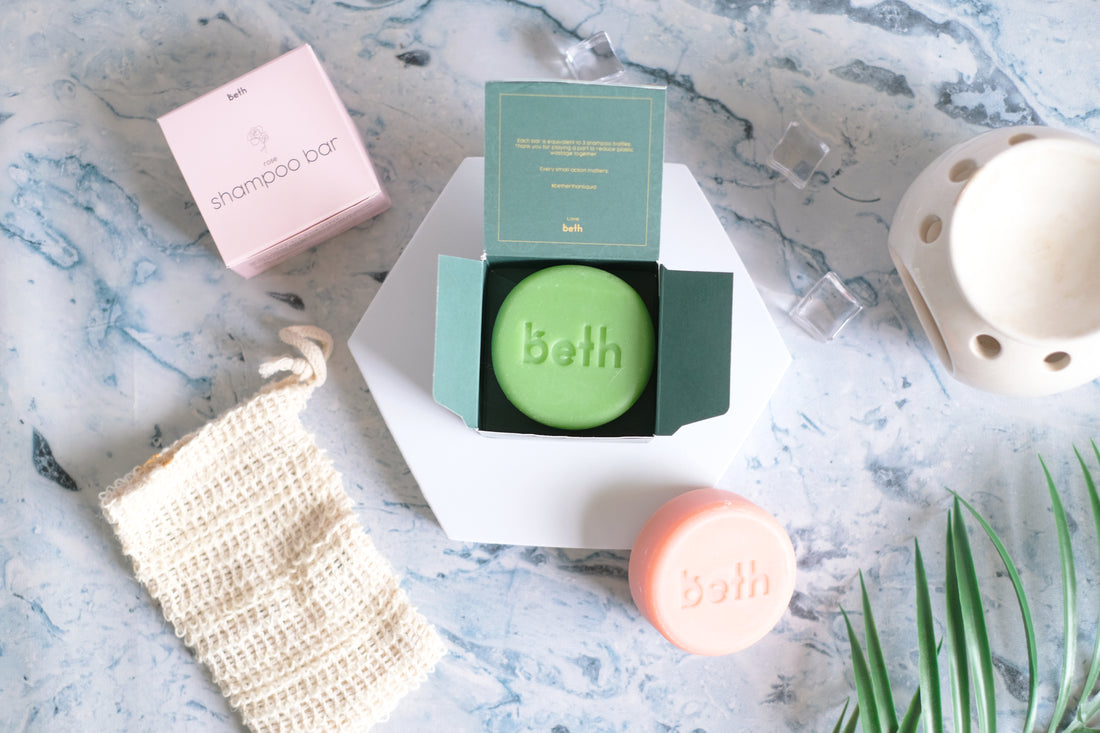Not all shampoo bars are made equal
Maybe you’ve decided to ditch the bottle and are on your transition to a #noplastic life. You might have already noticed that there are a lot of shampoo bars out in the market right now. However, not all are great for your hair. If you are familiar with having your hair feel sticky or fizzy after using a shampoo bar, chances are, you’ve come across a shampoo bar that’s actually made of sodium hydroxide. And, if you remember anything from your chemistry class, that’s soap.
Why should I care about the pH levels of my shampoo?
Yes you read that right–soap. Soap-based shampoo bars are typically made with oils and sodium hydroxide because these are cheaper to make. But the problem with soaps is that they don’t make great shampoos. Soap, being alkaline, disrupts your hair’s pH levels.Your scalp is naturally slightly acidic, with its pH level sitting somewhere between 4.5-5. Soap, on the other hand, has a pH level of 9 or 10.
Source:https://salonworthyhair.com/ph-balance/low-ph/best-shampoos-tested/
Why are soap-based shampoos bad for my hair?
Soap-based shampoos are often too harsh for your hair, stripping away the natural oils that leave your hair feeling dull and rough. For those with coloured or bleached hair, alkaline shampoos can also cause decolouration.
When the hair shaft comes into contact with something too alkaline, the hair cuticle sticks up, causing it to lose moisture much more quickly than if it were lying flat on the scalp. As a result, the hair becomes dry and coarse. When the oils, water, and soap are mixed together, the reaction creates a waxy residue as a by-product.
This is why some shampoo bar brands recommend regularly washing with apple cider vinegar to get rid of the “soapy” residue and rebalance your hair’s pH levels. However, while the rinse can help bring back smoothness and shine, it cannot reverse the damage or dryness that had already occured.
All round, not great for your hair.
A better way to shampoo - pH balanced bars for a better mane and a better world
The honest truth is that not all bars are made equal. There are shampoo bars that are both better for the environment and for your hair, but you need to make sure that your shampoo isn’t really soap.
That’s why true shampoo bars like Beth are soap-free. They are made of ingredients like gentle surfactants that are pH balanced, don’t leave unwanted residue where there shouldn’t be, and actually keep your hair clean, healthy and hydrated. This means no damage, no Apple Cider vinegar washes, and no transition periods.
That’s both win-win for your environment and your mane.
How do I make sure my shampoo bar actually isn’t actually soap?
Look for a shampoo that’s pH balanced. The next time you pick up a shampoo bar, make sure to read the ingredients list on the back. The ingredients are typically listed in order of composition. You can tell whether or not a bar is actually soap if ingredients such as sodium hydroxide are listed as one of the first few. Other common main ingredients in a soap-based shampoo bar are:
- Sodium Olivate
- Sodium Cocoate
- Sodium Sunflowerate
- Sodium Butterate
- Sodium Castorate
- Glycerine
- Water/ Aqua + a preservative
(Source:https://www.sustainablylazy.com/blog/shampoo-bar-transition-hard-water-uk)
Conclusion
Finding the perfect shampoo bar for your hair can be hard to navigate when there are so many choices. But doing so doesn’t have to be a compromise, and making a few informed decisions can help make sure that you are making the best decision for both you and the earth.
Learn how Beth does both at : https://beginwithbeth.com/pages/shop
Source:https://www.pexels.com/photo/close-up-photo-of-a-person-washing-her-hair-8466376/

